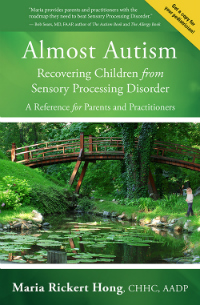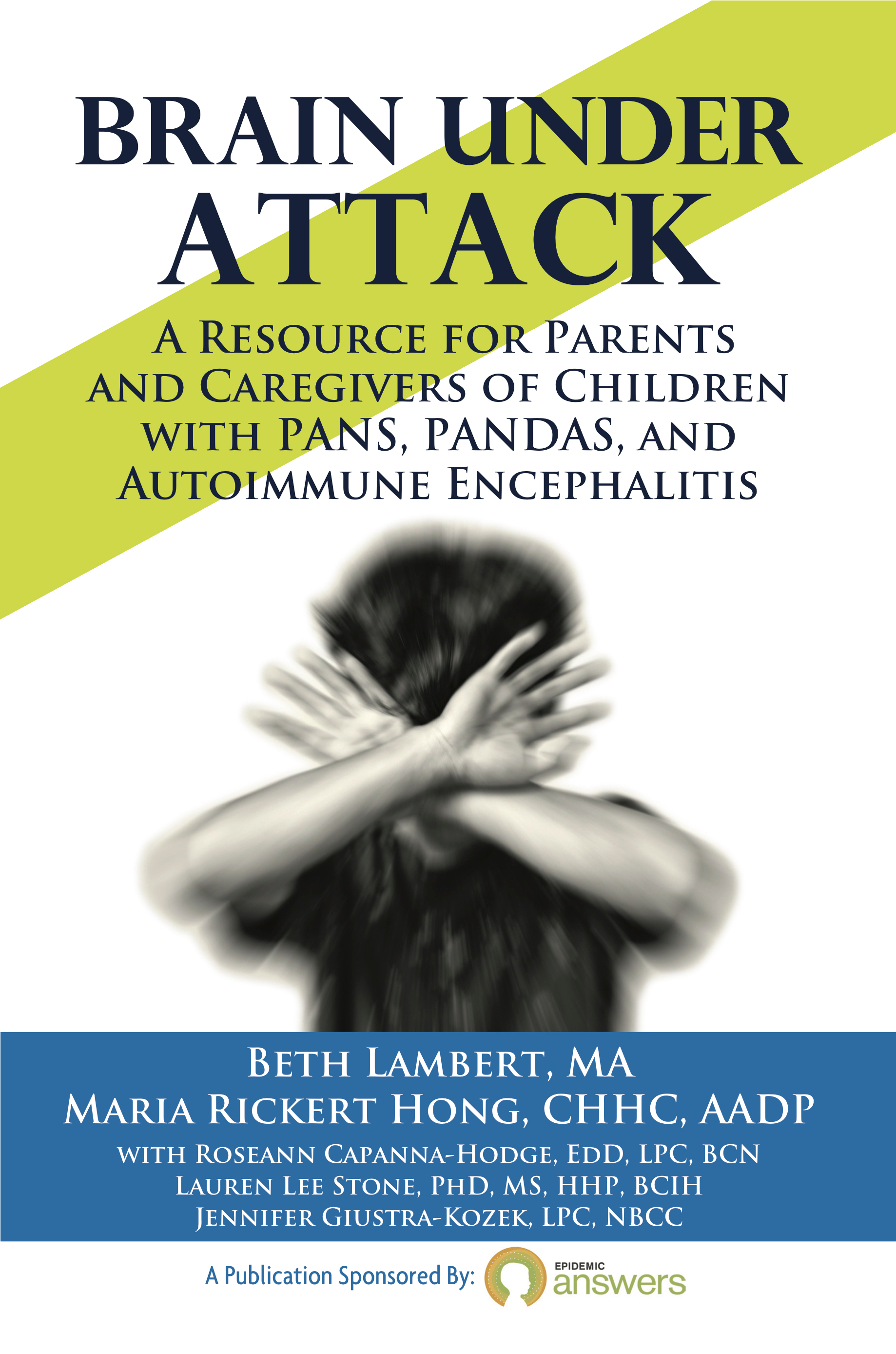 Having a son with a developmental delay was very hard on me. He didn’t walk until he was 20 months old. This was extremely hard for me because he didn’t walk until 3 weeks before his little brother was born, and I was having to carry him everywhere.
Having a son with a developmental delay was very hard on me. He didn’t walk until he was 20 months old. This was extremely hard for me because he didn’t walk until 3 weeks before his little brother was born, and I was having to carry him everywhere.
I suppose the bright side is that he didn’t weigh a whole lot, given that he was also a failure-to-thrive baby.
His sensory processing disorder turned him into a barnacle. I felt as if he were permanently physically attached to me. It wasn’t so bad when he was younger, but after his brother was born, it was extremely difficult to deal with two small, crying children at the same time, who both wanted to be picked up and held at the same time.
And then when our nanny left to have her own baby when my older son had just turned 3, his sensory processing and anxiety went full tilt. He was used to having someone always there immediately to meet his needs; now he had to share me with his baby brother.
And so my older son cried and cried and cried about every little thing. The more he cried, the more it upset me because I realized pretty quickly that nothing I could do or say would make him not cry so much. He would yell, I would yell, nobody was happy. I knew this wasn’t any way to live, but I had no idea how to make him stop.
His over-the-top reactions to his sensory issues were really getting to me. I quickly developed middle-of-the-night insomnia, where I would wake up wide-awake at 1:00 or 2:00 in the morning and not be able to go back to sleep for 2 or 3 hours.
This wasn’t helpful at all because the next day I was extremely tired and irritable from the lack of sleep, and the problem was compounding every night despite my taking a nap in the afternoon when the boys were taking their naps.
I was constantly fatigued and tired before I had kids; it was so much worse now. I was barely treading water just to get through the day. It was all I could do to make myself go to the grocery store or get meals ready. I could barely pull myself out of bed every morning.
The lack of sleep quickly drove my immune system into the ground. Not only was my older son getting every cold there was at preschool (he’d go to school for a few days, catch a cold, then be out for a week with it; the cycle repeated continuously throughout his first year at preschool), but I was catching every cold, too, and I couldn’t shake them.
I would be sick for 2-3 weeks at a time with a cold, then, sure enough, my ears would get infected, so I’d go to the doctor and get some antibiotics.
My menstrual cycles (lovely to have to discuss them here, but you’ll see in another blog how profoundly linked all these issues are) immediately went from an always-consistent 28 days (that’s why I was able to get pregnant so quickly both times at such “advanced maternal ages”) to anywhere from 21 to 27 days.
I thought I was going through perimenopause, but I was highly suspicious given that my symptoms coincided exactly with the timing of the stress I was going through immediately after our nanny left.
I went to my gynecologist, and he gave me Ambien for the insomnia and Zoloft for the irritability. I don’t like taking long-term pharmaceuticals, but I knew of no other option. In any case, the Ambien did nothing for my insomnia, so I stopped taking it, and I was back to square one.
Given that I thought I was starting peri-menopause, I read “What Your Doctor Might Not Tell You About Premenopause: Balancing Your Hormones and Your Life”, by John Lee, M.D., Jesse Hanley, M.D., and Viriginia Hopkins. I also read Ann Louise Gittleman’s “Before the Change: Taking Charge of Your Perimenopause”.
I highly recommend both books for explaining how estrogen is the problematic, bitchy hormone, while progesterone is the happier female hormone that most women with “female” issues are typically so deficient in, despite what your gynecologist tells you; both books recommend supplementing with bio-identical progesterone cream for “female” problems.
Because the John Lee book is slightly more complicated as it explains how hormones are made and what can disrupt them (toxic chemicals, plastics, fluoride, bromide, etc.), I would recommend the Ann Louise Gittleman book first, as it is simpler and more approachable.
In it, she also recommends certain supplements such as zinc (if you don’t have enough zinc, you have too much copper, which can make you irritable), B vitamins, and magnesium. She writes that a magnesium deficiency can lead to irritability, too, and that most people are deficient in magnesium; she recommends 500-1,000 mg of a magnesium-only supplement.
I began supplementing with magnesium, and, lo and behold, my middle-of-the-night insomnia disappeared! I was so excited that when I went in for my next checkup, I told my gynecologist about it. She just shrugged her shoulders and said, “Whatever works for you.”
I was thinking, “Are you kidding!! What is wrong with you?” I was extremely put off by her attitude. I wanted to tell everyone I knew about my miracle (and I’m sure I’ve told most of you!).
I read “The Magnesium Miracle” by Carolyn Dean, M.D., N.D. (which I highly recommend), and discovered that magnesium calms the central nervous system, so it not only promotes sleep, but it also can help relieve the symptoms of asthma, which my older son later developed. To this day, it is one of the core supplements that my sons and I take.
I was also constantly having Candida infections, to put it somewhat politely. I know this is a gross subject, but Beth Lambert (co-founder of Epidemic Answers and author of “A Compromised Generation”) also said that many women have also told her that this was one of the most significant symptoms they had, where they knew something was wrong and they were getting no help from their doctors.
Mine were recurring every month, and none of the medicines the doctor gave me helped. The gynecologist basically told me that I was an unclean person and that I shouldn’t wear tight clothes. You’ll see later on how far-off-the-mark, condescending and ignorant this comment is. You can also guess by now that she wasn’t my favorite person!
I came down with shingles. I had no idea what this pinching, burning pain was. I thought an insect had marched up my leg, taking bites as it went. Shingles is supposed to be a disease of people older than 50 or 60, not someone my age. Turns out that severe stress can make the latent virus from a previous chickenpox episode turn into shingles.
I also had the worse case of poison ivy, ever. I had been gardening in late winter, clearing out weeds and bushes from a part of the yard I wanted to turn into a plant bed. It was a mild winter, so there wasn’t any snow on the ground and the temperature wasn’t too cold.
I had taken to gardening in late winter/early spring as I had become extremely intolerant of temperatures above 80 degrees or so. And I used to live in New Orleans where it’s like that most of the year!
Apparently, I had been tearing out poison ivy vines left and right without knowing it; there were no leaves on them yet to let me know what it was. It wasn’t until I went to my internist in early March after having suffered through whatever-it-was for at least a week that she figured out it was poison ivy.
“First case of the season”, she said. She gave me a 6-day dose of steroids, but once I had used them all up, the rash came back with a vengeance. It was all over me again. I wasn’t about to go back on steroids, and that was all conventional medicine had to offer me.
I began to search for alternative therapies and discovered a homeopathic remedy: rhus toxiconderon. It’s an extremely dilute preparation of poison ivy.
The thought behind homeopathy is that “like cures like”; a very small amount can stimulate the body to heal. And it worked! Another miracle! To this day, it’s what I take for poison ivy, and I recommend it to all my friends. You can find it at Whole Foods or health food stores.
You can guess again that I wasn’t too happy with what conventional medicine was offering me. If you’ve been reading my blogs, you know that I was becoming increasingly disenfranchised with allopathic, Western, disease-management medicine and what it failed to offer my sons.
It seemed all conventional doctors wanted to do was give me pharmaceuticals or cut something out, and they didn’t understand that different systems in your body are connected. By now, I had had two miraculous relieving of symptoms from things other than what conventional medicine offered. The whole medical system really began to look out of whack to me.
The homeopathic poison ivy remedy got me very interested in what alternative medicine had to offer, so I began seeing a naturopath that some friends had recommended. Seeing him was the beginning of taking charge of my health and understanding what was happening to me.
He began working on clearing my channels of elimination and gave me supplements and specific-to-me homeopathic drops that would serve this purpose.
After I began seeing him, I developed a chronic sinus infection in my throat and ears. It had been raining for 5 or 6 weeks straight, and I always had that frog-in-my-throat feeling where I was constantly having to clear my throat.
It turned out that I had a systemic Candida infection throughout my body (yuck!), which was not only the source of those lovely monthly infections but also of my sinus infection. The constant warmth and high humidity from the rain made all that yeast inside of me really grow and gave me a mold allergy. This was gross but fascinating all at the same time!
I began researching this subject, and I discovered “The Yeast Connection and Women’s Health” by William G. Crook, M.D., Carolyn Dean, M.D., N.D., and Elizabeth B. Crook, another book that I highly recommend.
Some of the major symptoms of yeast overgrowth that I had were fatigue, monthly infections, headaches, cold hands and feet, low body temperature, while some of the other symptoms were drowsiness, irritability, insomnia, a tendency to bruise easily (which my internist was baffled by), and constant sore throat and cough.
Candida overgrowth causes a weakening of the immune system and a leaky gut, which can lead to allergies, food allergies, and allergic reactions, like asthma, hives, eczema, cradle cap, and psoriasis.
I learned that sugar, white-flour foods, and alcohol feed the yeast. Other things that can also lead to yeast overgrowth are: antibiotics, birth-control pills, steroids, normal female hormonal fluctuations, and diabetes. You can see how ignorant that gynecologist was!
I dug for more information elsewhere and found that even the antibiotics in non-organic meats, dairy and eggs can lead to yeast overgrowth as well as the triclosan that is so common in anti-bacterial soaps and other products.
To this day, I refuse to use anti-bacterial soaps. The ubiquitous dispensing of it is one of my new pet peeves. At almost every birthday party my kids go to, there’s someone there with a squirt of it for the kids’ hands after they’ve played and before they eat. It’s probably lost on most other people except for me that using anti-bacterial goo and then eating pizza and cupcakes afterwards compounds the kids’ chances of getting yeast overgrowth.
To get rid of yeast overgrowth, you’ll also want to start by supplementing daily with a good probiotic, the refrigerated kind like you can find at Whole Foods. I found the “Body Ecology Diet” by Donna Gates to be extremely helpful in learning how to overcome yeast overgrowth.
This is a hard diet to follow, but it works. The basic premise is to remove yeast-promoting foods and to eat foods that don’t promote yeast.
Yeast-promoting foods are not only sugars of all kinds (including honey, maple syrup, etc.), white-flour foods, processed foods, and alcohol but even dairy products, sugar, fruit and most grains except for millet, amaranth, buckwheat, and quinoa.
Other foods to avoid are nuts, flour products of any kind, beans and most vinegars. Most land vegetables and all sea vegetables are allowed, as are soaked and sprouted almonds.
One of the key components of the Body Ecology Diet is the consumption of cultured foods, such as sauerkraut, kimchi, kefir, and kombucha. If these are raw and unpasteurized, then they also provide probiotics; you’ll want to make sure that they are organic, as well. You can find them in the refrigerated section at Whole Foods; mine sells them near the refrigerated juices.
I like the ones by Rejuvenative Foods, especially their Veggie Delite Zing Salad. Because these are expensive to buy, it’s much cheaper to make your own.
It took a few months of doing the diet (it was hard!), but it was worth it. I no longer have yeast overgrowth, and many, but not all, of my associated symptoms went away. I no longer had monthly infections.
I wanted to go back to the gynecologist and tell her, but I’m sure she would’ve just shrugged her shoulders and said, “Whatever works for you.” I also no longer had chronic sinus infections and headaches. I still had horrible fatigue and intolerance to heat. I also had no stamina; I had always had very little stamina, but now it was practically non-existent.
By working with my naturopath and by doing the Body Ecology Diet, I was definitely not getting as sick as often nor as severely as I was before. In fact, a few months after seeing him was the last time I had a cold for sinus infection or a long time.
If I did get one, I learned to cut out sugar, etc., and my naturopath told me about supplementing with a goldenseal tincture as well as using a little warm salt water in a neti pot (please be sure to boil the water first then let it cool down) to clear my sinuses. I haven’t needed to take any over-the-counter cold medicine since I began seeing him.


